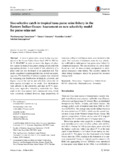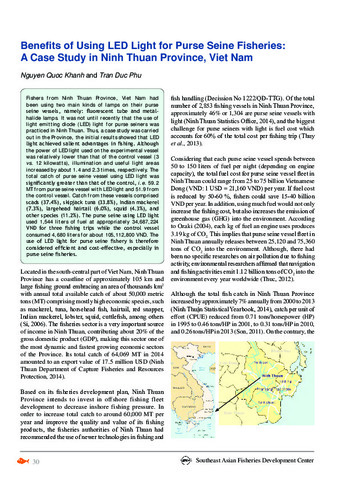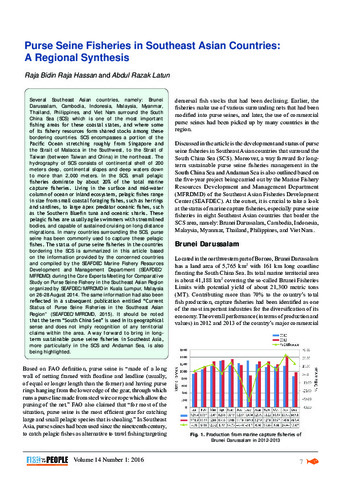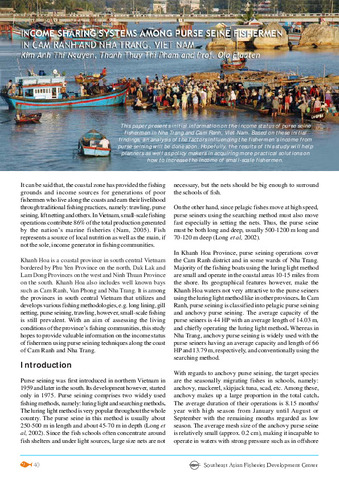Size-selective catch in tropical tuna purse seine fishery in the Eastern Indian Ocean: Assessment on new selectivity model for purse seine net

View/Open
Request this document
Date
2016Page views
699Metadata
Show full item recordCited times in Scopus
27 readers on Mendeley
Share
Abstract
A series of purse seine survey fishing was conducted in the Eastern Indian Ocean from 1995 to 2003 by M. V. SEAFDEC in order to assess the degree of selective capture in tropical tuna purse seining around drift fish aggregating devices. A new model of size selectivity of a purse seine net was developed as an analytical tool. The model considered retention probabilities on fish encountering a net. The feasibility of selective capture was evaluated by comparing size distributions of skipjack, yellowfin, and bigeye tunas in the catches and selectivity curves for the three species estimated on the model. Size distributions were affected by the selectivity, and sizes at 50 % selectivity were larger than industrially marketable size. Most catch in the three species were commercial sizes, which were selectively retained; however, large proportions of immature yellowfin and bigeye tunas were included in the catch. The exclusion of immature tunas by size selectivity is difficult in multi-species tuna purse seine fishery for commercial purposes. The size selectivity of a net is insufficient as a tool for tuna resource management in multi-species tuna purse seine fishery. The selective capture by other fishing techniques should be pursued for resource management.
Suggested Citation
Chumchuen, W., Matsuoka, T., Anraku, K., & Arnupapboon, S. (2016). Size-selective catch in tropical tuna purse seine fishery in the Eastern Indian Ocean: Assessment on new selectivity model for purse seine net. Fisheries Science , 82(3), 391-404. https://doi.org/10.1007/s12562-016-0977-9
Subject
Collections
- TD Journal Articles [11]
Related items
Showing items related by title, author, creator and subject.
-
Benefits of using LED light for purse seine fisheries: A case study in Ninh Thuan Province, Viet Nam
Quoc Khanh, Nguyen; Duc Phu, Tran (Secretariat, Southeast Asian Fisheries Development Center, 2015) -
Purse seine fisheries in Southeast Asian countries: A regional synthesis
Hassan, Raja Bidin Raja; Latun, Abdul Razak (Secretariat, Southeast Asian Fisheries Development Center, 2016)Several Southeast Asian countries, namely: Brunei Darussalam, Cambodia, Indonesia, Malaysia, Myanmar, Thailand, Philippines, and Viet Nam surround the South China Sea (SCS) which is one of the most important fishing areas ... -
Income sharing systems among purse seine fishermen in Cam Ranh and Nha Trang, Viet nam
Nguyen, Kim Anh Thi; Pham, Thanh Thuy Thi; Flaaten, Ola (Secretariat, Southeast Asian Fisheries Development Center, 2007)




